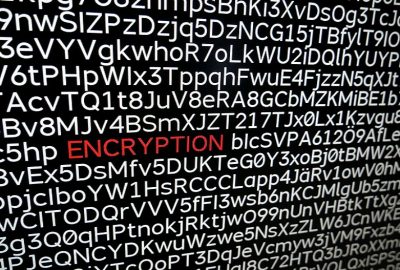 Cryptographic systems are currently divided into two fields: symmetric and asymmetric encryption. Both types of encryption work in different ways. And it’s important to know why when it is necessary to implement this type of mechanics in our products.
Cryptographic systems are currently divided into two fields: symmetric and asymmetric encryption. Both types of encryption work in different ways. And it’s important to know why when it is necessary to implement this type of mechanics in our products.
Let’s start at the beginning:
What is encryption?
Encryption is the security procedure in which the data on a file changes through algorithms. The idea is to make such data illegible to parties who do not have the necessary cryptographic keys. It is a widely used resource to ensure a secure transfer of data or documents. It’s impossible to prevent any data to leak in a transaction, yet we can prevent it from harming us.
Usually, online banking and commerce use encryption. This prevents inappropriate handling of customer information. Many messaging systems also use this tool to secure their communications.
Asymmetric Encryption
It works on information coding based on two keys: one private and one public. In this way, the sender retains the private key and can send the public one to any recipient. The Private key allows you to decrypt all messages with the public key. And it can only decrypt the messages encrypted with the original private key.
Let’s talk about the types of keys encryption uses:
Public Keys: The public key can encrypt messages that are only decrypted with the private key. This means that no one with the public key can decrypt that message. This is what ensures confidentiality since only the recipient can decode the message.
Private Keys: With the private key we can encrypt information. And only the person that owns the pair of the key can decode it. This process doesn’t provide the same confidentiality. Because anyone with the public key could read the message. Only the person with the private key can encrypt the information in the way that only the one with the public key can decrypt it.
Symmetric Encryption
 Symmetric encryption is basic but plays an important role in client-server communication. Especially through the HTTPS protocol. The difference is that symmetric encryption uses a single key for encryption and decryption. Authenticity and confidentiality are not achieved but is much cheaper. Besides, it only implies sharing the key between the sender and the receiver.
Symmetric encryption is basic but plays an important role in client-server communication. Especially through the HTTPS protocol. The difference is that symmetric encryption uses a single key for encryption and decryption. Authenticity and confidentiality are not achieved but is much cheaper. Besides, it only implies sharing the key between the sender and the receiver.
Symmetric vs Asymmetric: Differences
Once established the definitions of each one, it is time to talk about their differences. Symmetric encryption algorithms use the same key for encryption and decryption functions. Asymmetrical uses a key to encrypt the data and a different one to decrypt them.
If you send someone a message by symmetric encryption you also share the decryption key. Thus, the other person can decrypt it and read it. The problem is that a hacker, obtaining the key, will be able to access the information.
So, if we use asymmetric, you encrypt the message with a public key. And the only way another can decrypt it is with your private key. Thus, asymmetric encryption offers a higher level of security.
Where does SSL Certification come in?
A digital certificate is a computer file generated by a certification services entity. This entity associates data with a person or company confirming its digital identity. We know that there are mechanisms to encrypt the message. But we do not know who grants these certifications or how valid they can be.
 This is where the Certification Authorities enter; entities responsible for verifying the identity of those who request it. The process to request a certificate is simple. The organization that wishes to verify its identity must generate a Certificate Request and send it to the CA. Once validated this information, they generate a digital certificate. This certificate is then sent to the applicant.
This is where the Certification Authorities enter; entities responsible for verifying the identity of those who request it. The process to request a certificate is simple. The organization that wishes to verify its identity must generate a Certificate Request and send it to the CA. Once validated this information, they generate a digital certificate. This certificate is then sent to the applicant.
What is CSR?
A CSR is a block of text that contains the applicant’s encryption information. Details such as domain name, organization name, city, email, and public key. This CSR must be digitally signed and sent to the CA. Then the CA finds the public key with which to decrypt that message and confirm the data. Upon confirming the identity, they resend the same certificate but signed by them.
We must understand that these CA’s are entities that our operating systems or apps trust. Digital solutions such as Tenable.SC offer their SSL Certification system. They too are completely valid and reliable. Besides, they offer services that allow generating personalized Certifications and many other facilities. It is a vulnerability management solution that provides compliance management capabilities. Also, it counts on continuous configurations of vulnerabilities in real-time.
If you want to know more about SecrityCenter CV and your SSL certification, you can contact us. We will help you with all the information you need, as we offer the best tools on the market. Our team is here to advise you and provide you with a more efficient IT environment.



